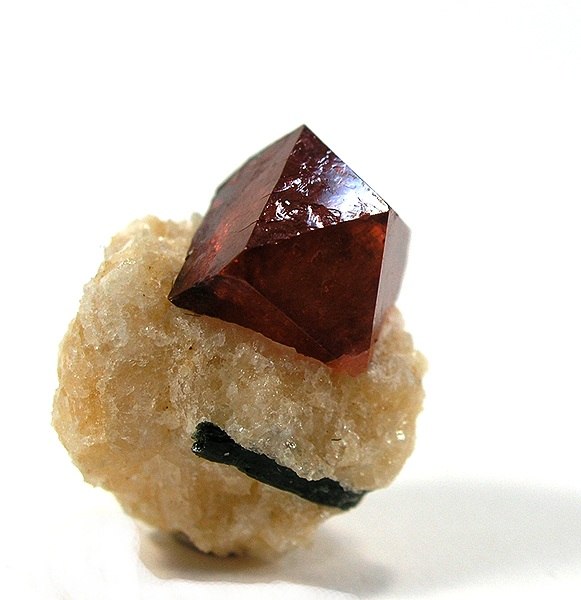A pleochroic halo, or radiohalo, is a microscopic, spherical shell of discolouration (pleochroism) within minerals such as biotite that occurs in granite and other igneous rocks. The halo is a zone of radiation damage caused by the inclusion of minute radioactive crystals within the host crystal structure. The inclusions are typically zircon, apatite, or titanite which can accommodate uranium or thorium within their crystal structures. One explanation is that the discolouration is caused by alpha particles emitted by the nuclei; the radius of the concentric shells are proportional to the particles' energy.
Pleochroic halos around crystals of zircons in a sample of biotite
Zircon is a mineral belonging to the group of nesosilicates and is a source of the metal zirconium. Its chemical name is zirconium(IV) silicate, and its corresponding chemical formula is ZrSiO4. An empirical formula showing some of the range of substitution in zircon is (Zr1–y, REEy)(SiO4)1–x(OH)4x–y. Zircon precipitates from silicate melts and has relatively high concentrations of high field strength incompatible elements. For example, hafnium is almost always present in quantities ranging from 1 to 4%. The crystal structure of zircon is tetragonal crystal system. The natural color of zircon varies between colorless, yellow-golden, red, brown, blue, and green.
A lustrous crystal of zircon perched on a tan matrix of calcite from the Gilgit District of Pakistan
Optical microscope photograph; the length of the crystal is about 250 µm
Sand-sized grains of zircon
A pale blue zircon gemstone weighing 3.36 carats





